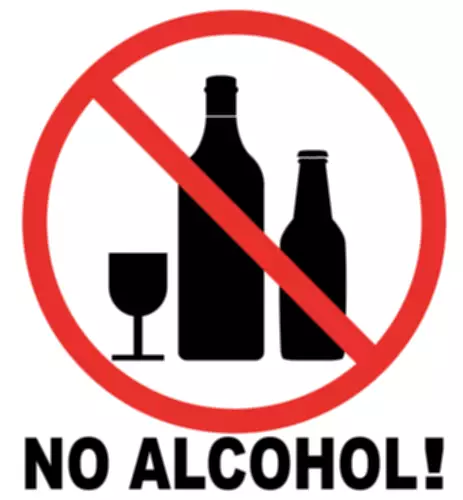
Severe and potentially life threatening symptoms of alcohol withdrawal include seizures and delirium tremens (DTs). Abruptly stopping alcohol use after prolonged heavy drinking can trigger alcohol withdrawal seizures due to changes in brain chemistry. When this effect occurs deeply or over a long period of time, brain activity can rebound during alcohol withdrawal, exceeding normal levels and creating the risk of a seizure. Someone with an alcohol withdrawal seizure may experience convulsions and lose consciousness.
- Benzodiazepines are first-line therapy for moderate to severe symptoms, with carbamazepine and gabapentin as potential adjunctive or alternative therapies.
- Phenobarbital has a very simple pharmacology, which is well suited to treat alcohol withdrawal.
- Symptoms start around 6 h after cessation or decrease in intake and last up to 4–48 h (early withdrawal).6, 10 Hallucinations of visual, tactile or auditory qualities, and illusions while conscious are symptoms of moderate withdrawal.
- Rodent models that mimic human alcohol withdrawal–related tonic–clonic seizures have been useful in defining the physiologic mechanisms underlying ethanol withdrawal seizures (9).
Contact Discover Recovery for Help with Alcohol Addiction Treatment
- Generalized tonic–clonic seizures are the most characteristic and severe type of seizure that occur in this setting.
- Thereafter, assessments can be made every 4 to 8 hours to determine the need for repeated dosing.
- You will typically require hospitalization if you experience seizures related to alcohol withdrawal.
- Mild symptoms may progress to alcohol hallucinosis, characterized by visual or auditory hallucinations that usually subside within 48 hours after alcohol cessation.
- Status epilepticus is a life threatening condition in which a person has a seizure lasting longer than 5 minutes without regaining normal consciousness or has more than one seizure within 5 minutes.
- By making it easier for GABA to attach to its receptors, Ativan increases GABA activity and calms your nervous system.
Epilepsy can cause seizures to occur with more mild levels of alcohol withdrawal than would occur in most people. References for this review were identified by searches of PubMed between 1985 and 2016, and references from relevant articles. The final reference list was generated on the basis of relevance to the topics are alcohol withdrawal seizures dangerous covered in this review. The only way to fully prevent alcohol withdrawal seizures and other symptoms of withdrawal is to not drink large quantities of alcohol. Whether over a long or short period, drinking alcohol in large quantities can cause your body to react when you stop drinking or reduce the amount you drink.

Delirium Tremens

In these models, animals are exposed to alcohol by intragastric intubation, inhalation, or feeding in a nutritionally complete liquid diet for periods of 2 to 21 days. The animals exhibit sound-evoked audiogenic seizures or handling-induced convulsions during the 1- to 3-day period after cessation of alcohol intake and may also experience spontaneous generalized seizures. Binge drinking and alcohol withdrawal together can cause seizures, even in people not previously diagnosed with epilepsy.
Mild Symptoms
Symptoms that you may experience in this stage include confusion, anxiety, irritability, and headache. Some people describe a general “funny feeling” that happens in this phase. When GABA comes to bind to the nerve cell, it opens up a channel to a negative charge that slows down brain activity. Alcohol and other central nervous system depressants keep that channel open, causing more intense sedating effects.

Dehydration accompanying delirium tremens may require replacement of up to 4 to 10 liters of fluid during the first 24 hours. Hypomagnesemia is common, lowers seizure threshold, and should be treated with magnesium sulfate (e.g., 1 g intravenously every 6 hours during the first day in patients with adequate renal function). Potassium should be included in intravenous solutions because hypokalemia may be exacerbated by glucose administration, leading to cardiac arrhythmias.
All condition, treatment and wellness content is medically reviewed by at least one medical professional ensuring the most accurate information possible. To lower your risk of these side effects, only use Ativan exactly as prescribed by your doctor for alcohol withdrawal. Your doctor may gradually lower your Ativan dose over time until it’s safe for you to stop taking the medication entirely. If you have questions or concerns about how Ativan could affect you, talk with your doctor.
Alcohol Withdrawal Seizures (Rum Fits)
It will also talk about why they happen, how they are treated, and how you can prevent them from happening. Delirium tremens (DTs), also called alcohol withdrawal delirium (AWD), is the most severe form of alcohol withdrawal. It occurs in 5-10% of alcohol-dependent people and is a medical emergency.

Unstable vital signs increase the risk of complications and can be managed with medications. People who experience severe withdrawal symptoms or DTs may require hospitalization or intensive care unit (ICU) treatment during alcohol. People with epilepsy should consult their doctor before using alcohol, as alcohol can affect epilepsy medications. Alcohol use can also trigger seizures in people with epilepsy if withdrawal symptoms begin to occur.

Comment (0)